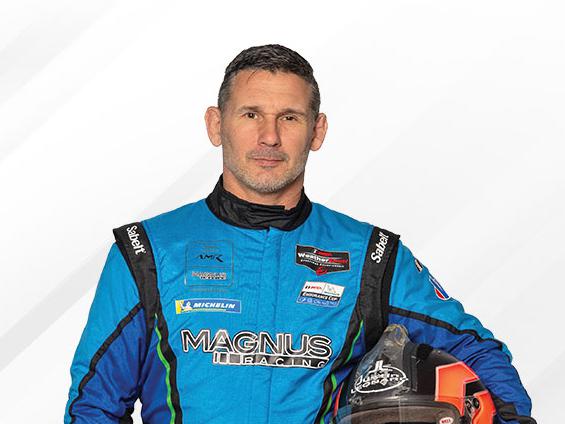Industry Insights: Wayne Jesel
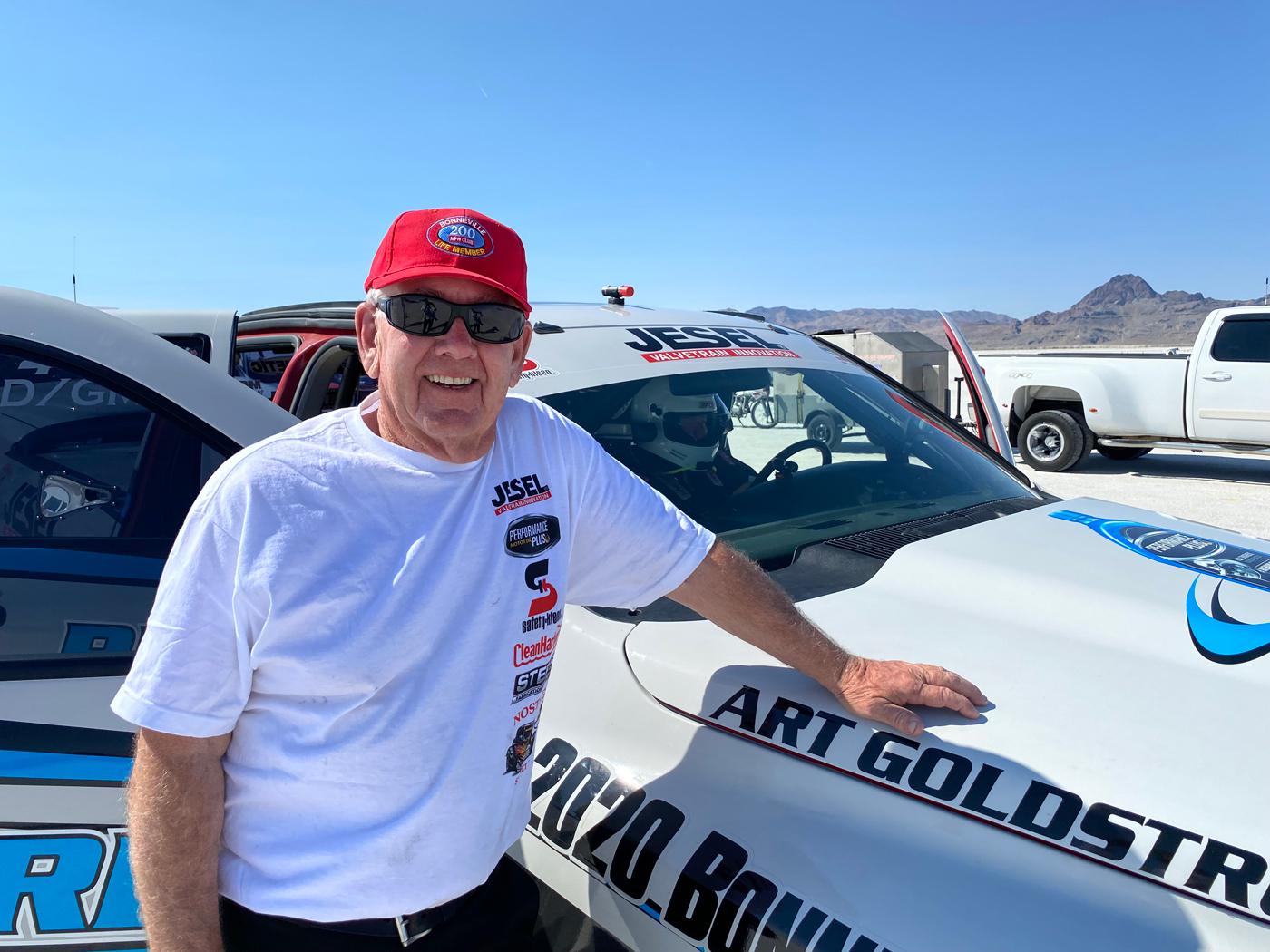
Relentless research, development, testing, and commitment to quality has created a unique competitive advantage for Jesel Valvetrain Innovation since its inception in 1980. So, we couldn’t help asking: Which creations are brothers Wayne and Dan most proud of? Which moments stand out among the rest? And what’s the key to their remarkable longevity?
When it comes to innovation in racing, it’s hard to find a better example than brothers Dan and Wayne Jesel. They even put the word right there in their business name: Jesel Valvetrain Innovation. The Jesel brothers are the creative force behind a number of critical developments including shaft rockers, cam timing belts for pushrod V8 engines, cartridge roller lifters, billet tool steel cam cores, dual-plug front-drive distributors, and now their own engines. Jesel valvetrain components have been tested and proven in effectiveness and longevity so completely that it’s just about impossible to find a serious team that doesn’t use the company’s products.
Jesel develops its products using Finite Element Analysis. Simply put, FEA is the use of computer modeling and stress simulation to figure out how any part is likely to operate or fail under a variety of scenarios. The process is designed to find weak points in a design before it blows up on track. When the modeling suggests a design improvement, the company uses rapid prototyping and CNC machining to make its test parts. Jesel maintain an in-house metallurgy lab to check all incoming raw materials.
But mostly the company is known for its valvetrain products. Jesel produces more than 550 different shaft rocker kits, ships more than 20,000 roller lifters annually, and makes belt drives and distributor drives for more than 30 popular engines. It also produces oversize billet camshaft cores, cam bearings, motorcycle valvetrains, and other related parts.
We found time in Wayne Jesel’s busy schedule to talk about his company’s history and future plans.
PRI: Not many people get to work with their brother for decades and stay friends. What’s the Jesel story?
Jesel: Well, here’s what I tell everybody: I was very fortunate. Danny started racing in the early 1960s. I was just a teenager then, and I started racing with him in the mid-1960s. He had a gas station, and when I was 12 or 13, I’d go there to help out, sweep the floors, pump gas, and what have you. Danny always, no matter where he went or what he did, going racing or whatever, he took me with him.
When I was still in high school, I started building a 1956 Sedan Delivery with a partner. I was 16 when we started running the car, and we were successful with it. Danny had a machine shop, and I helped him with that and did whatever I could for him. What happened later on, that people don’t know, is that the engine shop got broken into, and absolutely everything was stolen. That pretty much wiped him out because we had to pay for customers’ engines that were there, and we lost our own stuff. That almost put us out of business.
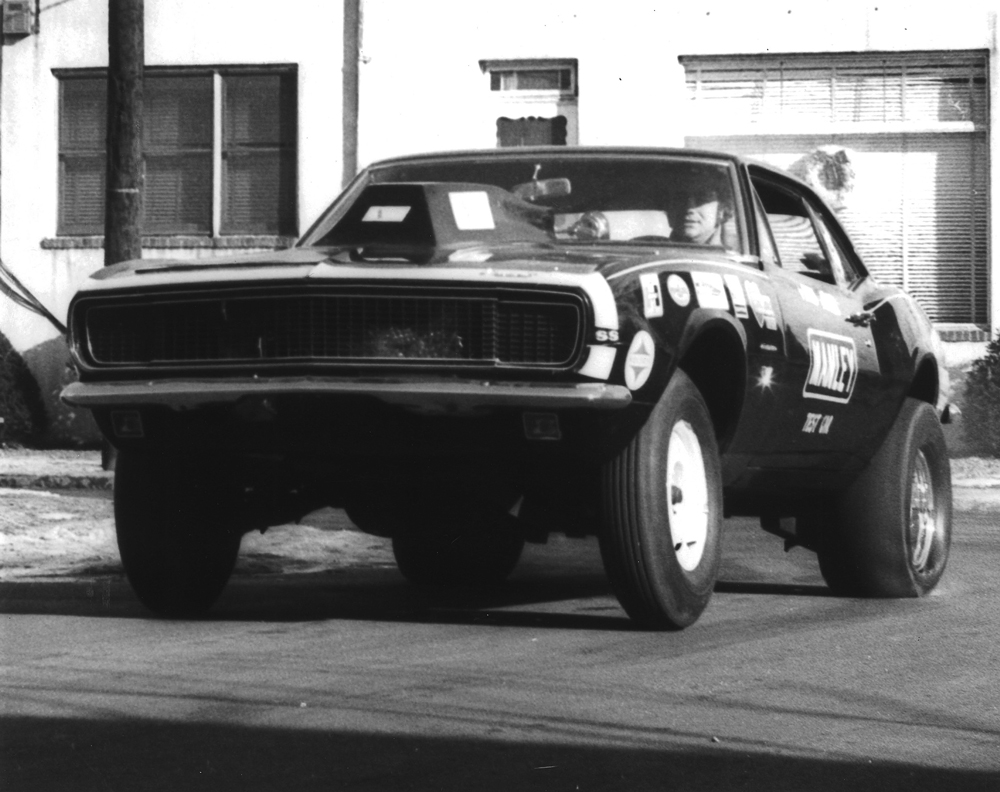
But I had a partner in my race car, and his father had a food distributing business. So I went to work for him while Danny was starting the valvetrain business, and we wound up buying a food service company ourselves. As I was working in that business, I was trying to help out Danny with a little bit of funding. I wound up selling the food service company and invested money into machines and things to help Danny’s business grow.
A lot of people know that I did the food service thing, because they still kid me about it: going from engines to making cocktail and tartar sauce, to getting back into the valvetrain business. But I just always say that the fortunate thing for me is that I had an older brother who took me under his wing, took me everywhere with him, and taught me as much as he could about the business.
PRI: How did the Jesel business focus on valvetrains come about?
Jesel: Back in the mid-1970s, nobody had a shaft rocker. Then several people came out with products around that time. We tried them all, and they didn’t work. At the time, we just ran a stud rocker with a girdle. When you started running higher rpm’s, you started having valvetrain problems. A lot of that was the geometry in the rocker arm.
Then what happened was by mistake. Cylinder Heads America had been doing our heads for us, and they actually made the heads for a bigger cubic-inch motor than what we were running. That meant we had to run the motor at a much higher rpm, and we started having a lot of valvetrain problems. That’s when Danny started looking into how to improve the valvetrain.
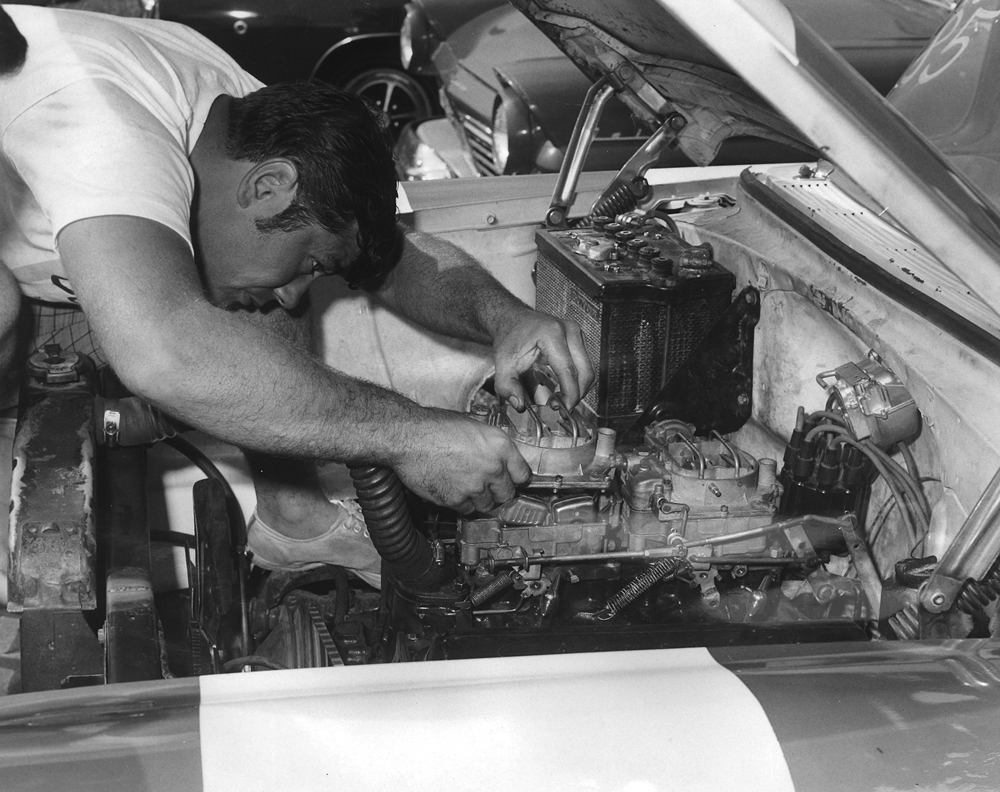
Because he was working on that valvetrain problem, he decided to focus on creating a new business producing a shaft rocker arm. What he learned with our engine and valvetrain, he incorporated into a shaft rocker arm system, and it worked very well!
But the real hard part to get started, was that you had all the top guys like Jenkins and Reher-Morrison who ran either small block or big block Chevys. They had tried the other shaft rocker arm systems that were out there, and they weren’t very good. They wanted to know, why is yours going to be better? We had to prove that our product was better. Fortunately, we were able to get it on a couple of good cars, and they were successful with it. By word of mouth, it started growing.
PRI: You’ve been in the valvetrain business since 1980, so that’s 42 years. Why have you guys stuck around when so many come and go?
Jesel: We never tried to spare any expense on anything. If it took a better material to make the part live longer or just be a better part, we would do that. We cut absolutely no corners. We felt that if we had the best part out there, that it would be worth the money, that customers would pay extra for the longevity that they would get out of the part.
For instance, several years ago the Top Fuel teams were having a terrible time with lifters. They couldn’t make two or three runs without breaking lifters, and then that would cause engine explosions. The Kalitta team asked us to start doing a lifter development program with them.
We had already been in the lifter business doing NHRA Pro Stock, NASCAR lifters, and so on. We tackled the bigger lifter, and we put all of our best materials in it. What we would do is give them some lifters to use for a test run or two and send them back. Then put another set in and maybe make three or four runs, and then send them back. That was so we could see the time cycle as to what part of the lifter would be taking the most load, or wearing out, or showing wear on the roller wheel or the axle shaft. We would try to address that and improve
the lifter.
As time went on, we felt we had a comfortable product and we started selling them to all the Top Fuel teams. These lifters are probably three times what it would cost them for what they had been buying, so it was a lot of extra money to them. But instead of three or four races, they run ours for 25 runs and then they send them back for a rebuild. Some teams even go for 40 or 50 runs before they send the lifters back. So the price difference is well worth the longevity and the fact that they’re not blowing their engines up.
We like to say, if you make the investment now, you probably won’t have to buy something else and then get ours. I’m not saying we’re crazy overpriced, but it was higher priced than most of the other companies that were out there. And once the top guys start running it, if the little guy can afford it, he’ll buy it.
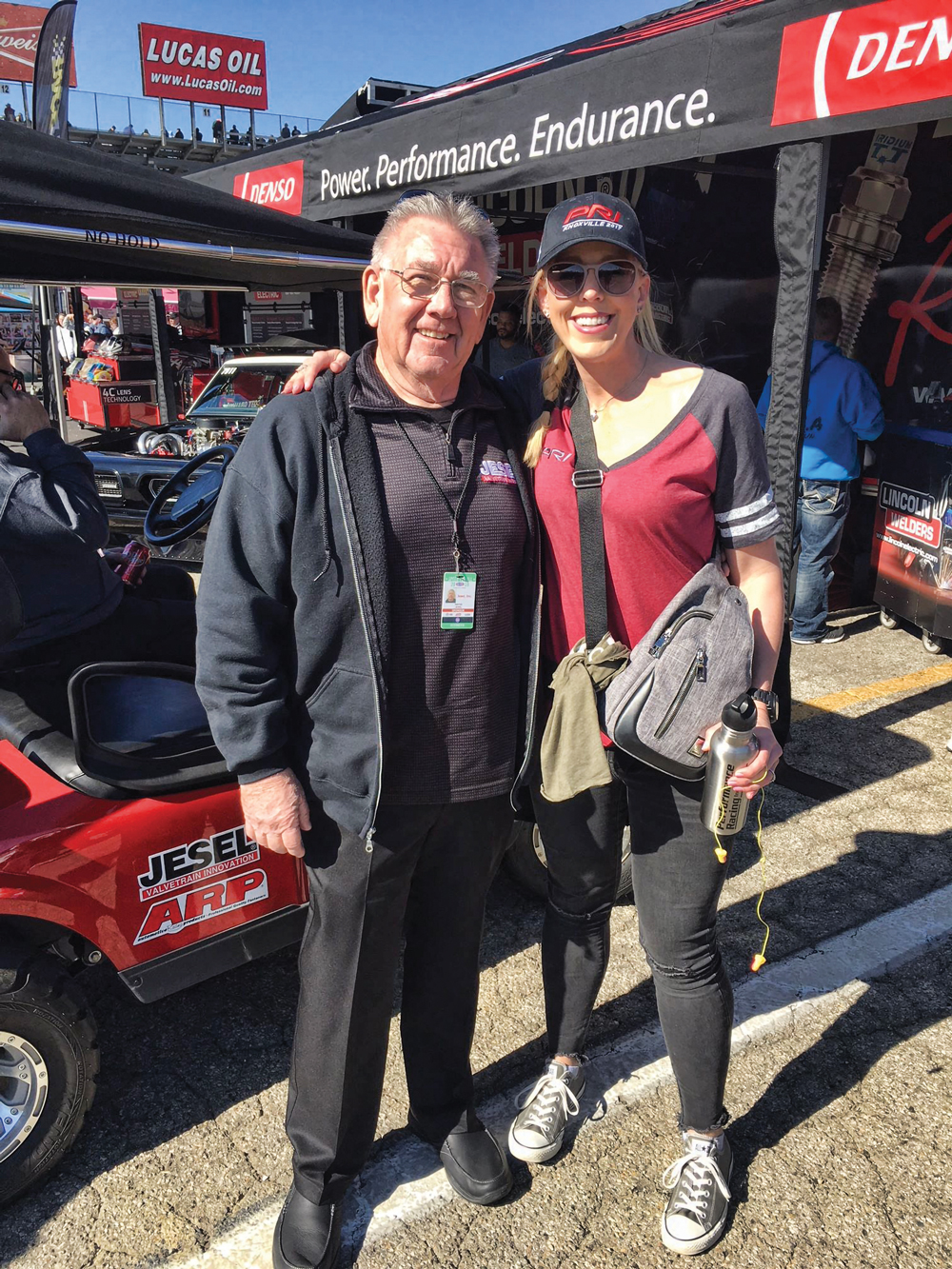
PRI: Are there any examples of that you can recall?
Jesel: A few years back the John Force team made a wholesale change. They were having trouble with lifters, one after another. On a gamble, they put our stuff in every one of their cars, and everything went fine. I had personally never met John Force, but I saw him on his mini-bike at a race and I flagged him over and introduced myself. I wanted to thank him for his business. John said, “No, thank you! Because we weren’t able to make two consecutive runs without blowing up.” Then he said, “You know, I asked our guys, who the heck is Jesel and why are we giving him such a big check?” That’s typical John Force!
But that’s what we’ve done over the years. We’ve just spared no expense on material and machining and quality and fit and finish. And we’ve been very, very fortunate.
PRI: Let’s look at the other side of that. How do you address the situation when you have a manufacturing or materials defect?
Jesel: I’ll tell you the only time I can think of that we had a problem with anything. In the late 1990s, every Ford in NASCAR had our shaft rocker arm on it. Each rocker arm has an individual shaft. What happened was one of the teams called us and said the shaft was wearing out at the bearing. They sent it back and we tested it and found the heat-treat was wrong. Well, it was a batch of hundreds and hundreds of them. The best thing was that we could tell by the color of the end of the shaft if it was the bad heat-treat. We figured that out!
I went down to North Carolina with hundreds of shafts and went around to every Ford NASCAR engine to check every rocker arm with every shaft and change them out. They already had motors ready to go for a race in Martinsville, Virginia. So I went to Martinsville and went into every hauler, looked at every spare engine, and we changed out every shaft that we had to, and there were no failures because we did that.
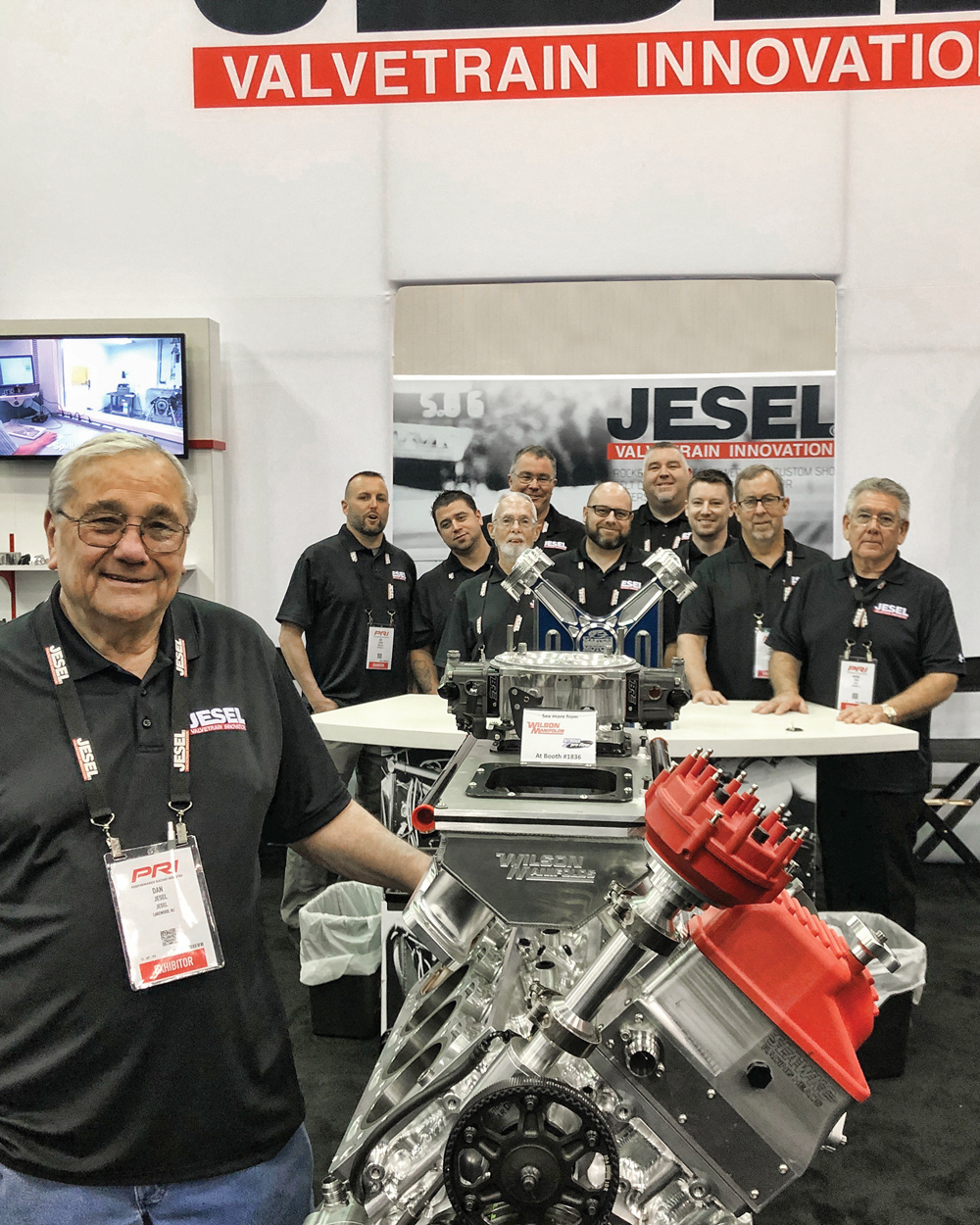
PRI: Out of all the innovations that your company has developed, which are you most proud of? Is there anything that really stands out for you?
Jesel: Right now, it’s what Danny just built. He’d been working on it over the last 10 years, but it’s his own complete motor, which we call the “Equal 8.” It’s a pushrod V8 engine, but it’s a different layout. Danny tried to make it so all the valvetrain was straight instead of all these crazy compound angles with the pushrods. It just makes it a lot easier on the valvetrain. Everyone who sees it says it’s the nicest pushrod V8 they’ve ever seen. It’s been a few years now, but when he first introduced it in 2018, we brought it to the PRI Show, and he won the Masters of Motors award with it for having the best-designed engine.
PRI: Thinking about the business environment today, especially the last couple of years, what challenges are you facing right now?
Jesel: We lack human capital. We absolutely need operators to run the machines. We have plenty of machines, plenty of machine time. Material is not so much of an issue right now. We’re still fine with getting everything we need, but we need people. Other than that, we’d be okay.
PRI: How have you worked around the supply-chain difficulties over the last couple of years?
Jesel: We’ve always kept a fair amount of inventory on hand, but we’ve really kept up with it. It has slowed up a little bit. What’s happened is, for instance, if we need 1-inch bar stock, we would normally get it on a moment’s notice. Now all of a sudden, we can’t get 1-inch bar stock, but we can get inch-and-a-quarter bar stock. Now we have to take that and get it turned down to an inch. Because we don’t have enough operators to do yet another process, what we’ll do is get the material and send it out to get it turned for us.
There’s one particular material that’s a little hard to get that’s called S7 Tool Steel. We use that in an awful lot of parts, but we do have material that’s a step better than that. So we’ve been using that for those applications. It’s a little more costly from time to time, but sometimes we just have to bite the bullet and eat the expense. But it’s not catastrophic where it’s going to be that much of a cost factor.
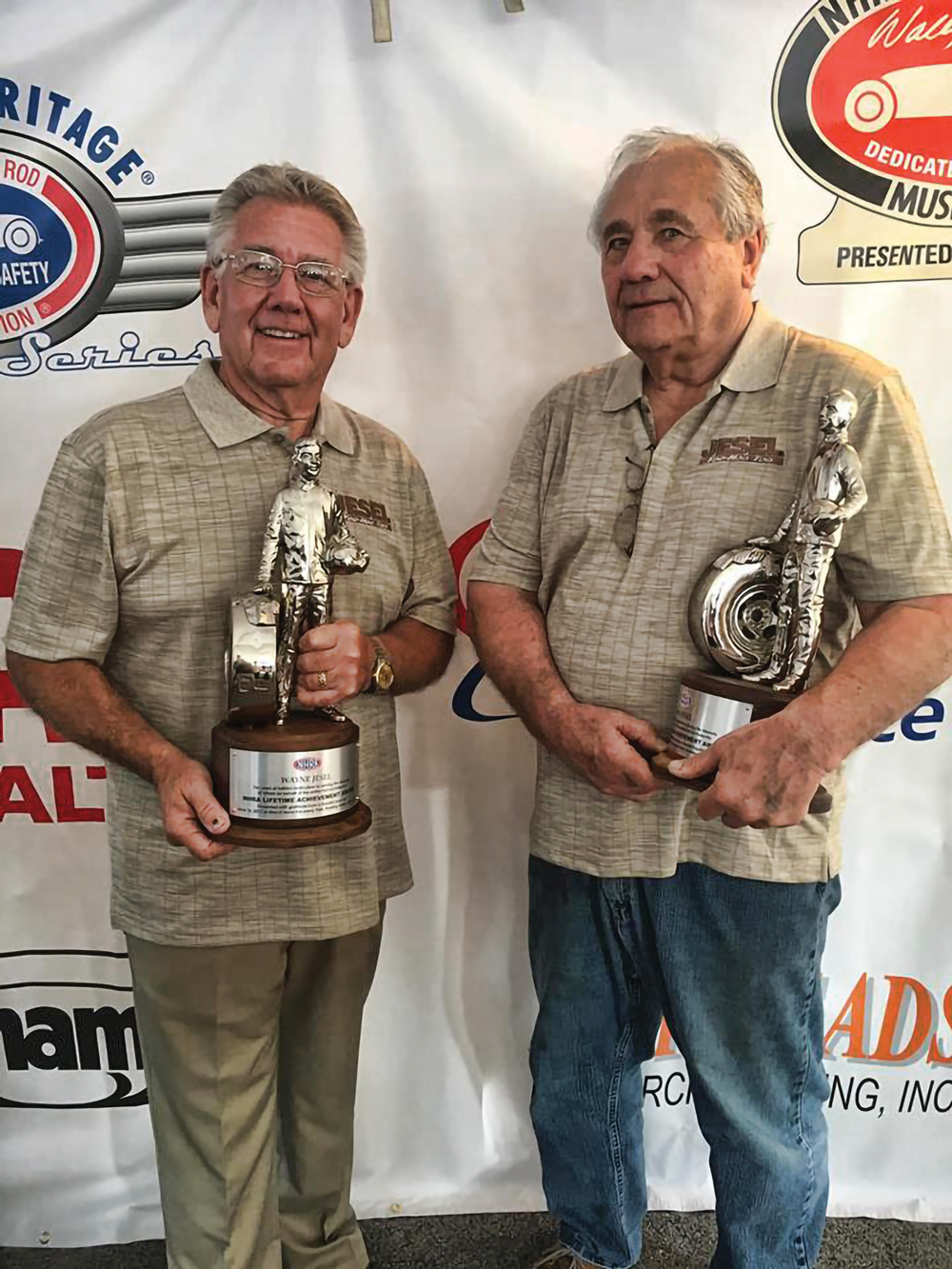
PRI: When you look back over your whole career, what are the moments that really stick with you?
Jesel: I think the best thing is when you see who runs your product. Almost every NASCAR Cup car and Xfinity car runs our roller lifters, every Top Fuel Funny Car runs our lifters and rocker arms. Just things like that.
NASCAR used to run a timing chain and gear set on their engines. When they go to a short track like Martinsville where you’re in and out of the throttle constantly in every turn, they were breaking timing chains pretty regularly. So Richard Childress Racing tested a belt drive, and they had good luck with it. It wasn’t legal for NASCAR at the time, but they tested it. Then they took it to NASCAR and eventually, they got it approved. Then pretty much every NASCAR team had to go with a belt drive. It was just things like that, where you took different types of racing to the next level, to help them out. Things like that really give you the satisfaction of what you’ve done for the industry and how you’ve helped different types of racing.
PRI: What advice would you give someone who wants to start their own company like you did?
Jesel: Make sure you have plenty of time and money for development, because that’s what it took. Working on that roller lifter, it was seven years before we ever sold a lifter. It took many, many, many bars of different stock and materials for testing and for trying things.
The worst thing you can do is come out with something new and then all of a sudden there are failures. That’s exactly what happened with the shaft rocker arm business in the beginning. Because a couple of companies came out with it and there wasn’t very good success, that turned everybody off on the idea. We had to prove to them that we had done our homework and made it better. Make sure that when you come out with your product, you’re ready.
PRI: One last question: If we were to time travel back to the late 1970s, is there anything happening today that would have surprised you?
Jesel: I don’t think so. Because everything evolved, it just keeps getting better and better.
 MEMBERSHIP LOGIN
MEMBERSHIP LOGIN JOIN PRI
JOIN PRI
